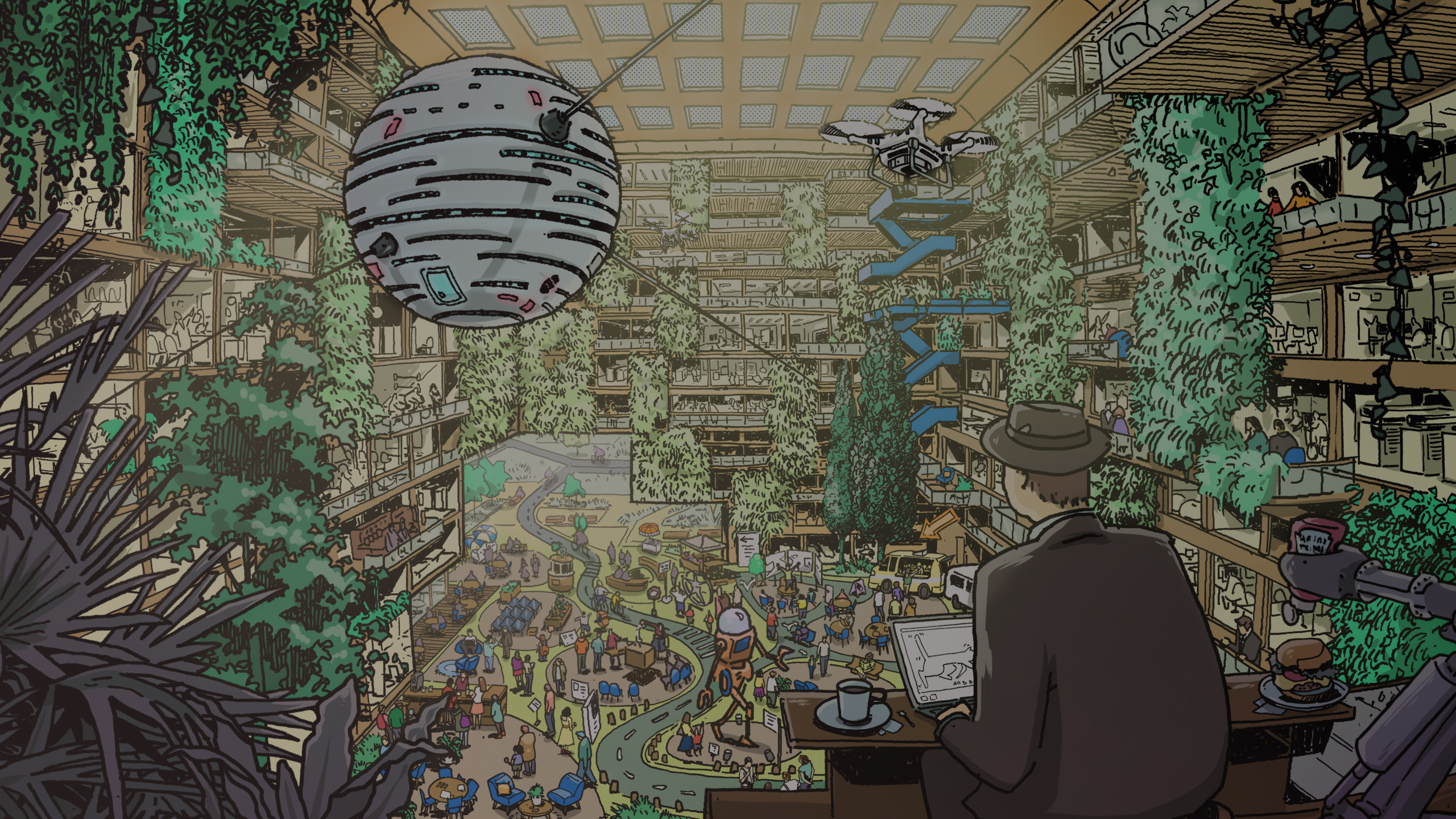Feast your eyes on the world's most outstanding architectural photographs, videos, visualizations, drawing and models: Introducing the winners of Architizer's inaugural Vision Awards. Sign up to receive future program updates >
Now open for entries, Architizer’s One Drawing Challenge was founded on the premise that powerful stories can be told through the language of architecture. The turbulent nature of 2020 provided ample inspiration for entrants last year, with many drawings forming a fascinating visual commentary on a wide range of world events. In particular, the sudden stillness that lockdown brought to urban settings, combined with the return of nature in other notable city centers, lead many entrants to contemplate architecture’s relationship to the natural world.
Interestingly, artists across the board did not primarily consider architecture as a means for humans to design their way out of the current climate crisis but rather considered how structures could be built and harnessed as a vital coping mechanism in the devastating future of the Anthropocene epoch. Be sure to click on the images in order to zoom in and to fully appreciate their intricate details!
 “Decoding WasteCity” by Andrea Zamora and Juanita Echeverry, Universidad de Los Andes
“Decoding WasteCity” by Andrea Zamora and Juanita Echeverry, Universidad de Los Andes
Meditating on the city-center buildings that were abandoned at the onset of the pandemic, this drawing imagines how a return to the city can be coupled with a rethinking of resource management. New vertical and horizontal transit paths interweave to form a new urban texture that supports new forms of waste colonization. In the words of the artists, “by decoding the decay accumulated over decades and reconstructing from what is no longer usable, life can develop in WasteCity.”
 “Pinnacle at White Hill” by Philip O’Brien
“Pinnacle at White Hill” by Philip O’Brien
This drawing evokes Buckminster Fuller’s Dome Over Manhattan project, which proposed covering Manhattan in a ginormous geodesic dome structure in order to reduce energy consumption in the city. While Bucky’s proposal was more of an optimistic project, O’Brien’s image comes as a dire warning about a time when “Earth’s atmosphere has been degraded to the point that life in the natural environment is no longer sustainable.” A lurid sky and sanguine earth appear outside of the protective covering and the engineered city figures as an environmental disaster out of control.
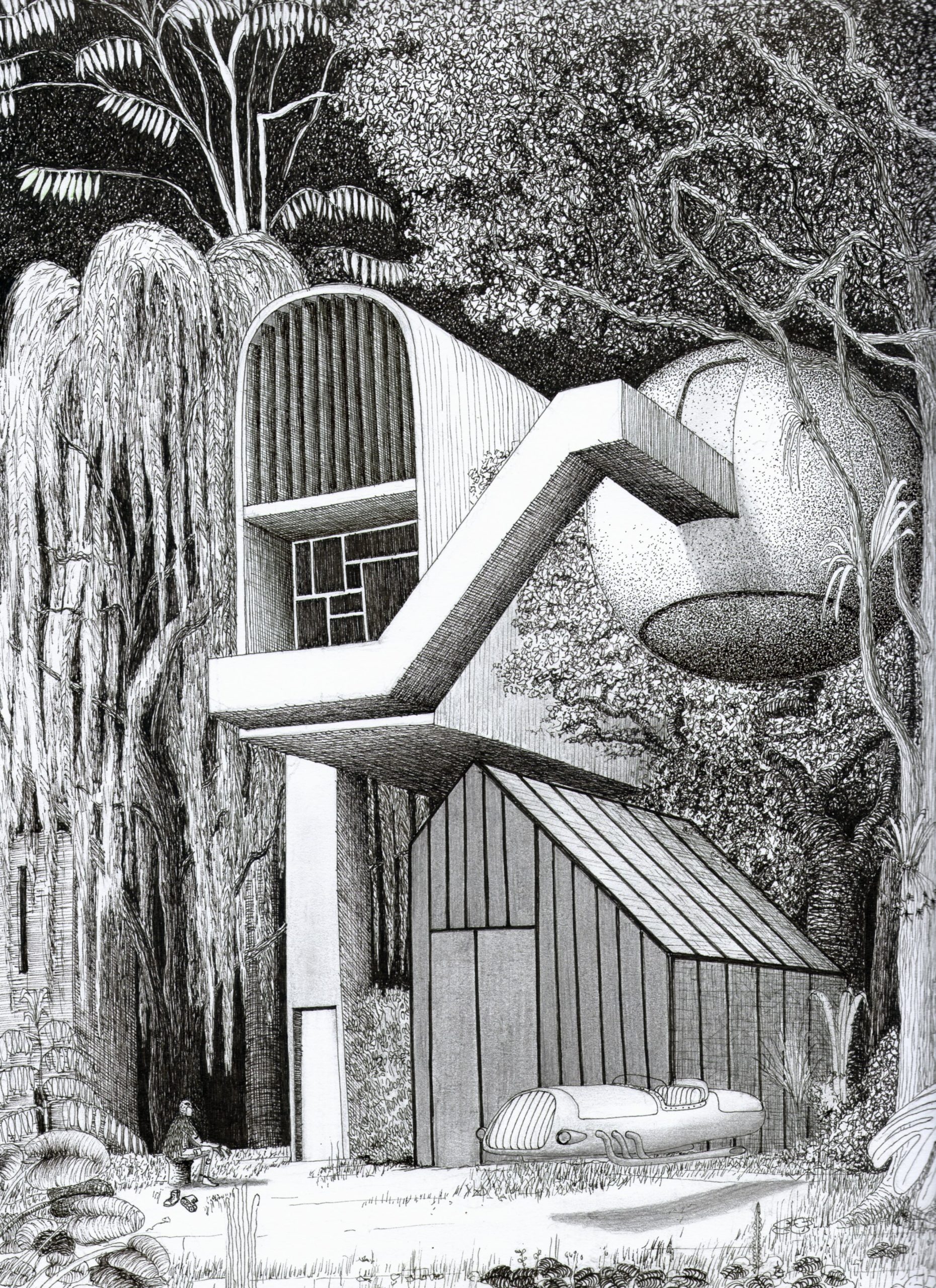 “CUENCAMO” by Danilo Cristancho
“CUENCAMO” by Danilo Cristancho
The built environment is often seen as antithetical to the natural world. Rather than emphasizing the antagonistic relationship between the two, this drawing imagines a structure built in absolute harmony with nature. As we face the climate crisis, “perhaps we should explore deep in the forests, build and be a community with nature, understand it and project our refuges according to what nature dictates.” Yet, the artist resists idealizing this solution to the Anthropocene era, suggesting that this model would only be possible in a far off planet (Cuencamo, as named in the title).
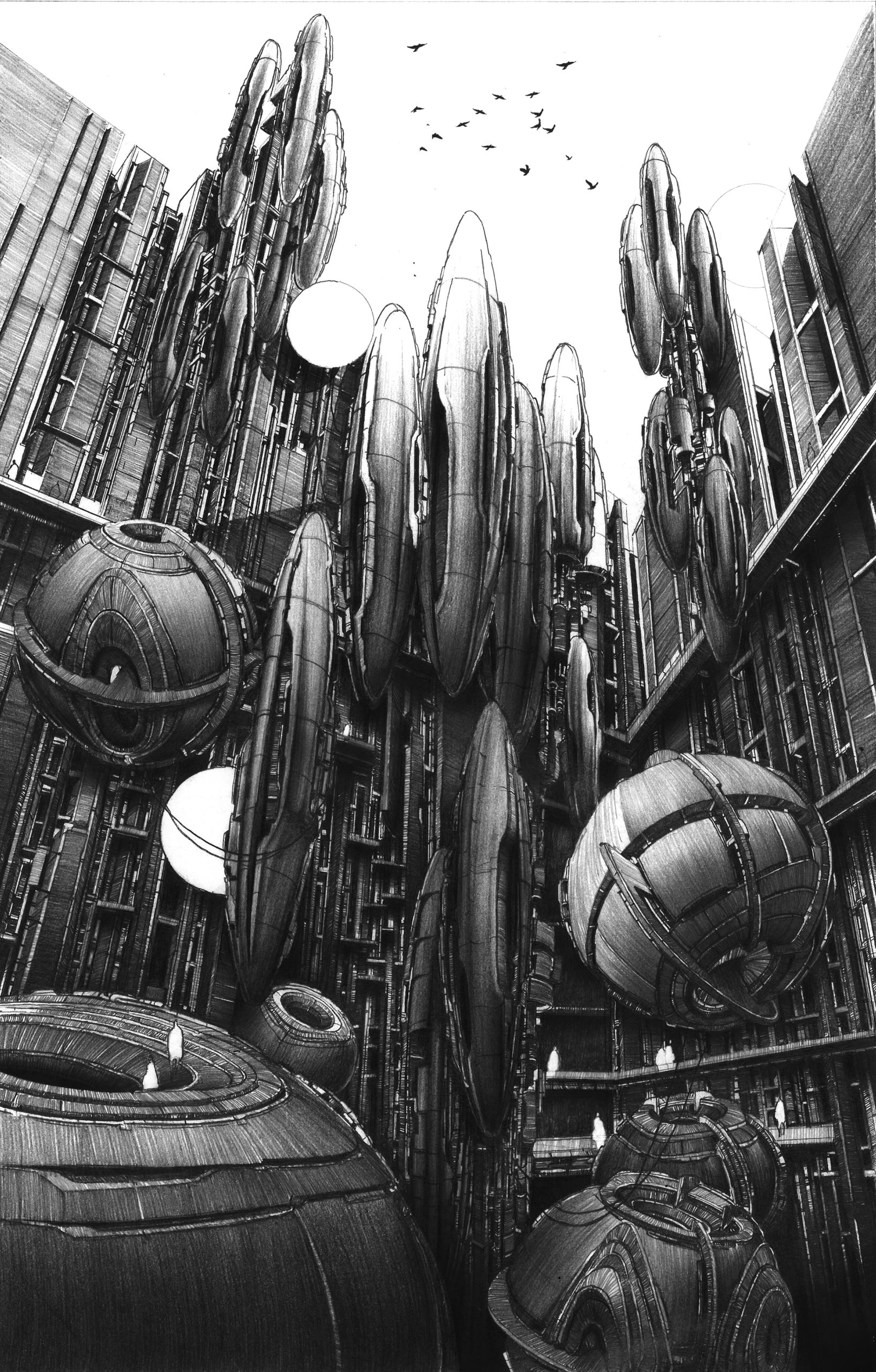 “ELLITANIUM City” by Hosein Mosavi
“ELLITANIUM City” by Hosein Mosavi
As the earth becomes increasingly uninhabitable, how will our growing population spatially adapt? In this drawing, a vertical structure colonizes plunging chasms that come as the result of imagined environmental disasters. The spherical volumes are residential capsules that are controlled remotely from an energy center that generates electromagnetic waves. It relies on the interconnection between units which allows the colony to expand. In sum the proposal considers “a different definition of being in collective spaces between suspended buildings using future knowledge and technology.”
 “Tech Company HQ” by Mariano Recalde
“Tech Company HQ” by Mariano Recalde
This competition drawing “illustrates the workplace of the future in a whimsical yet practical way, envisioning an adaptable space for working, interacting, and creating.” Grounded in the present day, the design represents a proposal for a tech company’s new headquarters. Biophilia and sustainability emerge as two prominent features. Inspired by a modern interpretation of a science fair, the drawing also incorporates elements of fantasy.
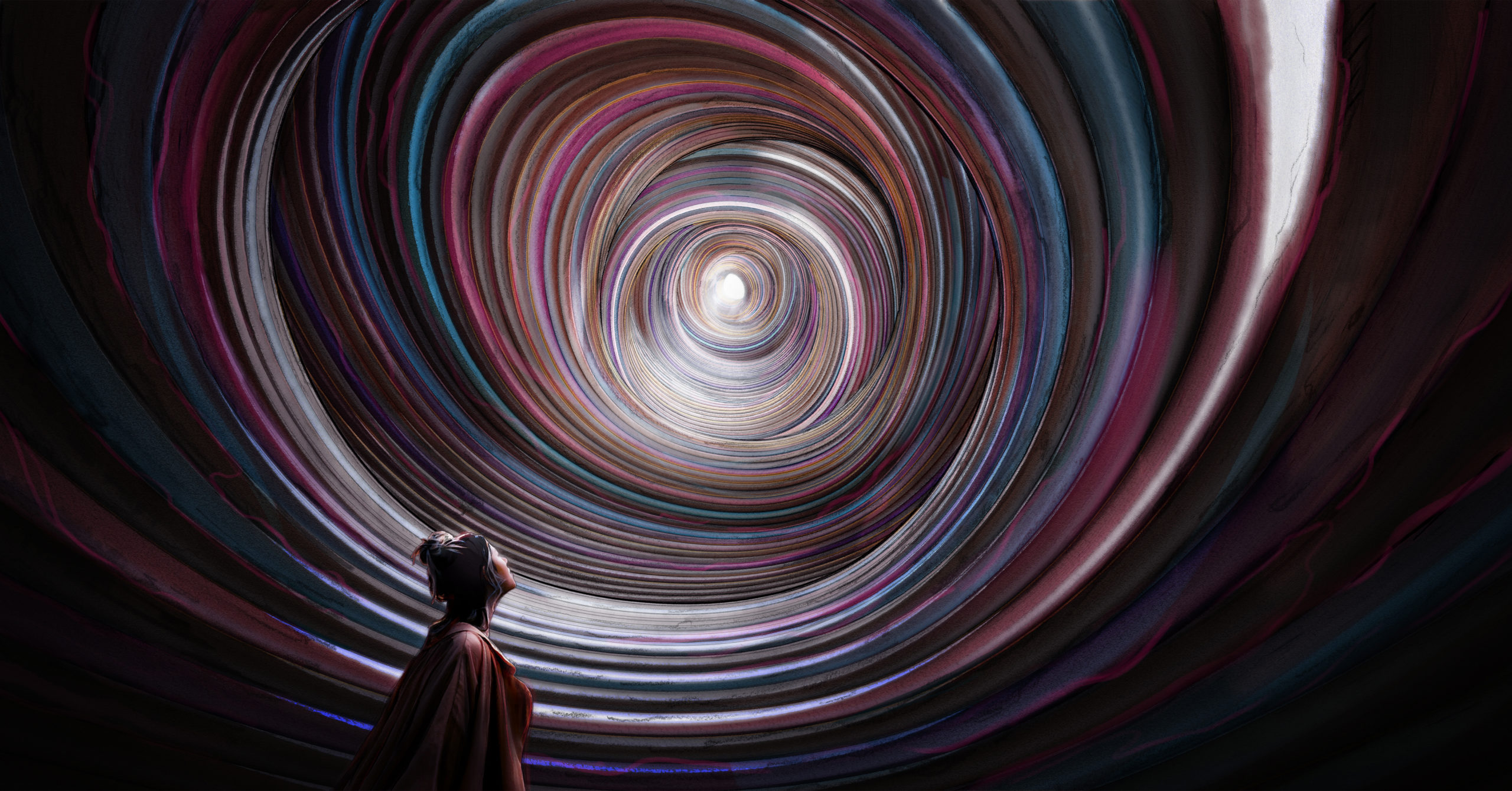 “Museum of the Anthropocene” by Felix Cheong
“Museum of the Anthropocene” by Felix Cheong
How can architecture retell the story of “the new age, which we have unknowingly entered, but are all complicit in creating?” Like the rings of a tree, The Museum of the Anthropocene proposes that we mark humanity’s timeline according to bands of materials. In so doing, we also transcribe a narrative of humanity’s actions on this planet over the last millennia. Built according to this model, the museum would be ever-expanding and the architecture would be read like a never-ending story.
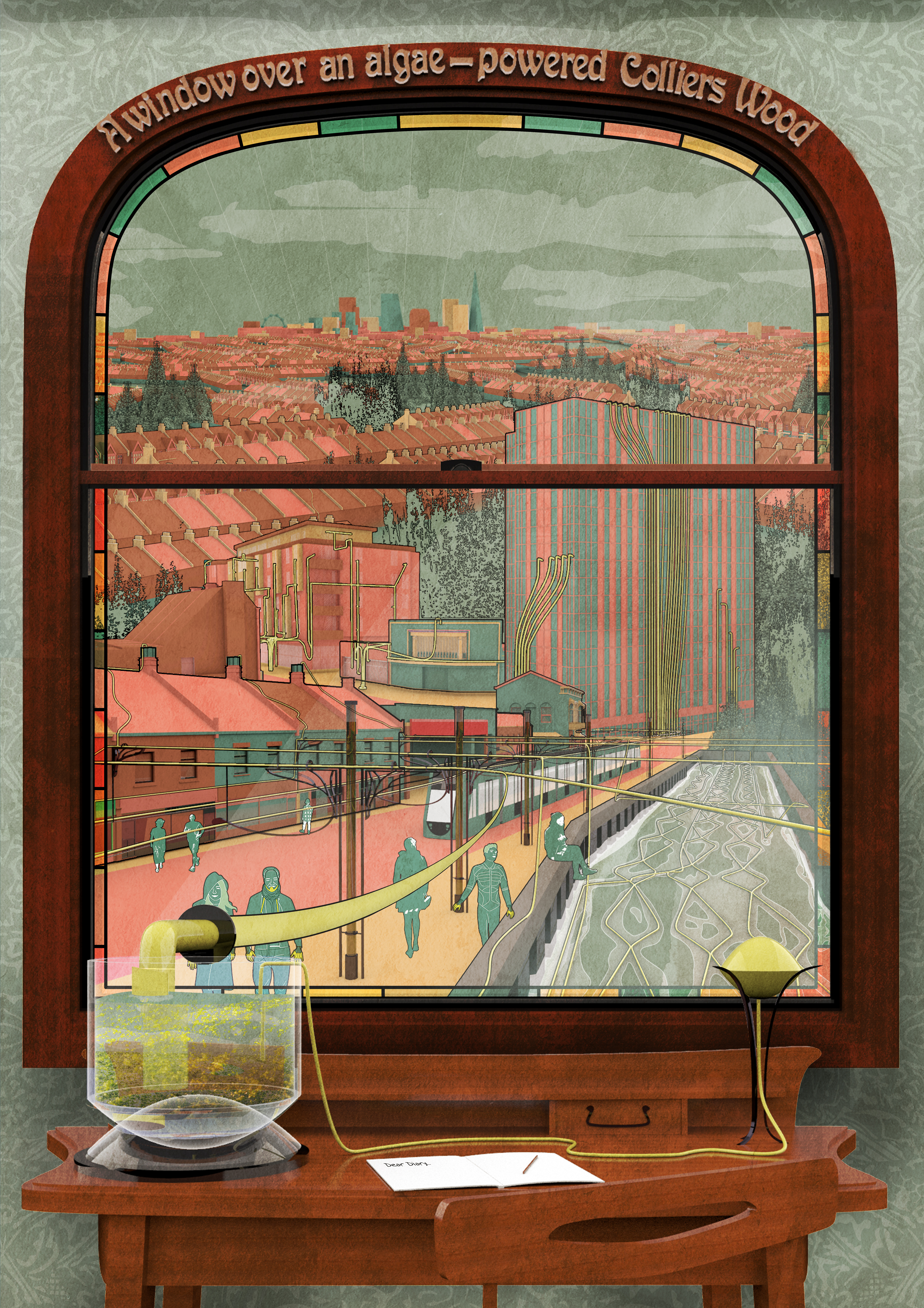 “A window over an algae-powered Colliers Wood” by Matt Faraci
“A window over an algae-powered Colliers Wood” by Matt Faraci
Colliers Wood is a London suburb that has grown denser in recent years due to the addition of new developments throughout the existing and extensive sprawl. At the same time, the neighborhood is known for its ties to the industrial Arts and Crafts movement. Taking this into account, Faraci’s drawing contemplates future opportunities for sustainable energy and “redefines natural organisms as an active piece of city infrastructure and satisfies our thirst for renewable energy whilst mitigating threats to our ecosystem.” Interior and exterior spaces merge and individuals are actively engaged in creating urban opportunities.
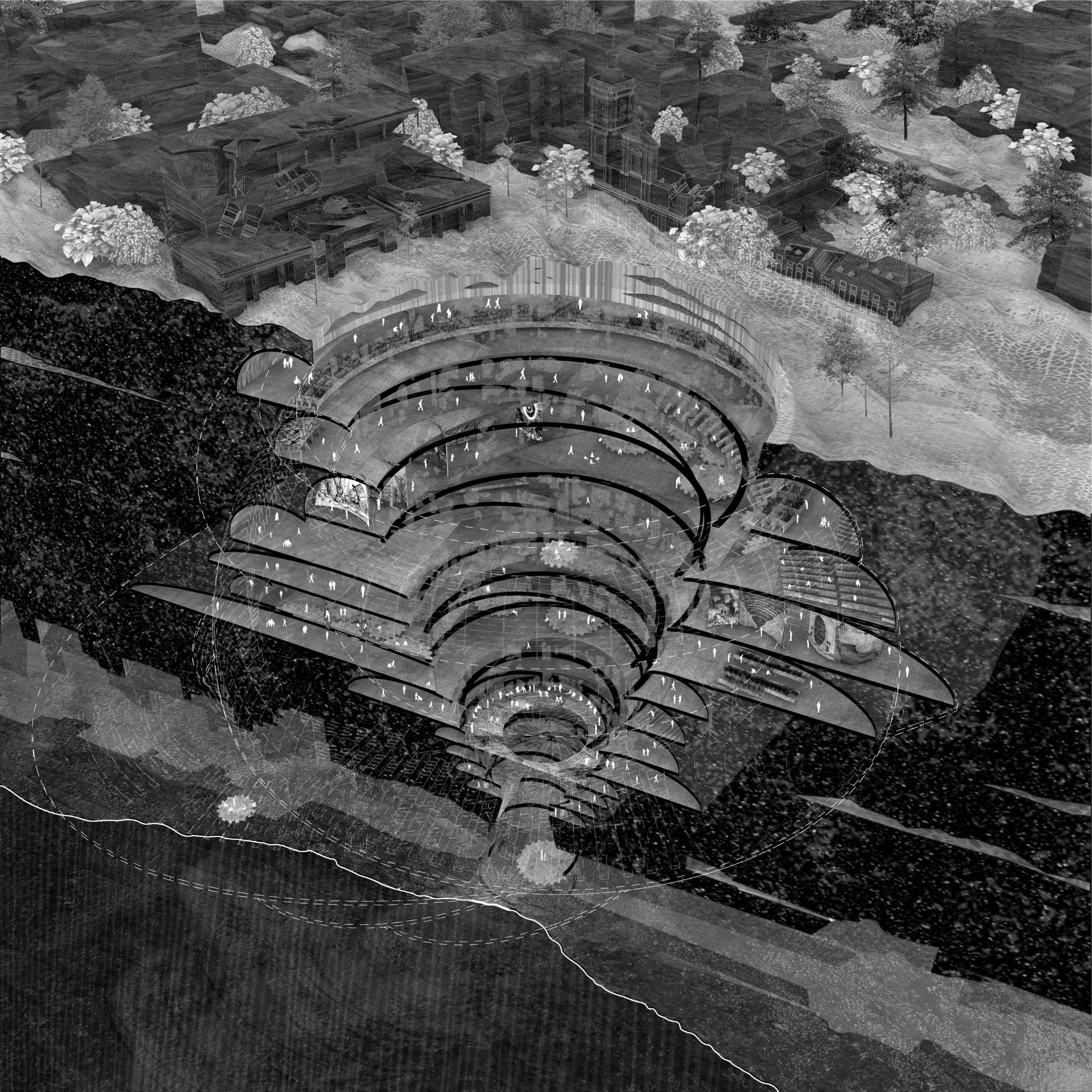 “POENAPOLIS: A DYSTOPIAN PATH TOWARDS REDEMPTION” by Santiago Unda Venegas Sergio Bellucci
“POENAPOLIS: A DYSTOPIAN PATH TOWARDS REDEMPTION” by Santiago Unda Venegas Sergio Bellucci
As the world crumbles and humans grapple with their complicity, this drawing imagines a radical and united response in which “the human race has decided to live underground in order to try and stop the Anthropocene’s footprint on the surface of the Earth.” The decision is a punitive one, wherein every major city is forced to burrow into the earth and to wait there for hundreds of years while the surface rebounds from the human-inflicted violence — “the city is an abandoned place and humanity lies below it’s ruins.”
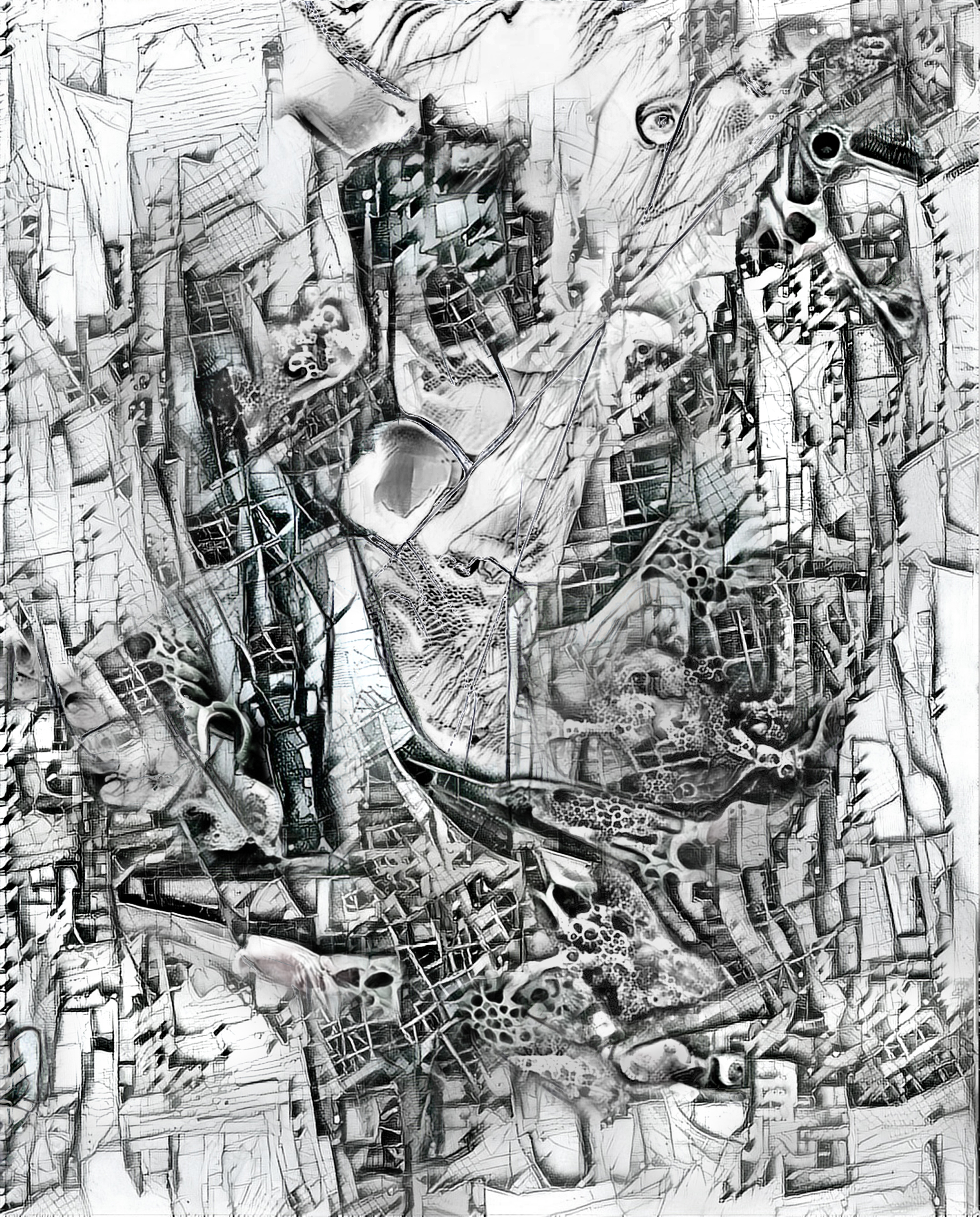 “Fusion” by Gonzalo Vaillo
“Fusion” by Gonzalo Vaillo
Hyper-urbanization pushes the limits of sustainability and quality of life. What would the re-occupation of obsolete agricultural areas entail? How could the “fused affiliation of natural, technological, and human agencies” found there establish “a model of low-human-controlled growth infrastructures emerging from the patterns of old agricultural subdivision?”
 “Mare Nostrum” by Leora Niderberg Larissa Reismann
“Mare Nostrum” by Leora Niderberg Larissa Reismann
As sea levels rise and carbon is expunged from our energy systems, how will our spatial experience of earth change? Taking into account mass migration and the rise of nomadism, landscapes are set to become more fluid — an idea which this drawing explores. In an imagined and not-so-distant future, a floating infrastructural ribbon emerges from the sea; it is self-generating, self-supporting, and self-sustaining. Dweller-citizens “may attach their floating homes to this communal backbone freely, and participate in an autonomous and borderless ecosystem based on care and renewable resources.”
Feast your eyes on the world's most outstanding architectural photographs, videos, visualizations, drawing and models: Introducing the winners of Architizer's inaugural Vision Awards. Sign up to receive future program updates >
